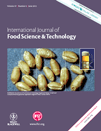
INTERNATIONAL JOURNAL OF FOOD SCIENCE AND TECHNOLOGY
Scope & Guideline
Pioneering Research in Food Innovation
Introduction
Aims and Scopes
- Food Processing and Preservation Techniques:
Research focusing on various methods to improve food safety, shelf-life, and quality, including thermal and non-thermal processing, preservation technologies, and novel food processing approaches. - Nutritional and Functional Food Development:
Studies that investigate the nutritional components of food, the development of functional foods, and the enhancement of health benefits through ingredient modifications and processing. - Food Quality and Safety:
Research dedicated to assessing the quality attributes of food products, including sensory evaluation, microbiological safety, and the impact of processing on food quality. - Emerging Ingredients and Technologies:
Exploration of novel food ingredients, such as plant-based proteins and bioactive compounds, and the application of innovative technologies like nanotechnology and 3D food printing in food development. - Consumer Acceptance and Sensory Analysis:
Studies examining consumer perceptions, sensory attributes, and acceptance of food products, including the impact of ingredients and processing methods on taste and overall product appeal.
Trending and Emerging
- Plant-Based and Alternative Proteins:
There is a marked increase in research focusing on plant-based proteins and alternative sources of nutrition, driven by consumer demand for sustainable and health-oriented food options. - Innovative Food Packaging Solutions:
Emerging studies on biodegradable and active packaging systems, including the use of nanotechnology and bioactive compounds, are trending as researchers seek sustainable solutions to enhance food preservation. - Functional Foods and Nutraceuticals:
Research exploring the health benefits of functional foods and nutraceuticals is on the rise, with a focus on bioactive compounds and their implications for disease prevention and health promotion. - Food Waste Valorisation:
The trend towards sustainability is evident in the increasing number of studies aimed at valorising food waste and by-products for the development of novel food products and ingredients. - Smart and Non-Thermal Processing Technologies:
Innovations in processing technologies, such as cold plasma, high hydrostatic pressure, and pulsed electric fields, are becoming more prevalent, reflecting a shift towards methods that preserve food quality while ensuring safety.
Declining or Waning
- Traditional Food Processing Methods:
Research on conventional food processing techniques has become less frequent as there is a growing emphasis on innovative and non-thermal methods which promise enhanced food quality and safety. - Focus on Animal-Based Ingredients:
The increasing interest in plant-based diets and alternative proteins has led to a decline in publications centered around traditional animal-based ingredients, as researchers explore more sustainable options. - Single-Dimensional Nutritional Studies:
There is a noticeable decrease in studies focusing solely on basic nutritional composition, as the field shifts towards comprehensive analyses that consider bioactivity, health implications, and synergistic effects of food components. - Chemical Additives and Preservatives:
Research on synthetic chemical additives and preservatives has waned, with a growing preference for natural, clean-label alternatives and biopreservation methods gaining traction. - Conventional Sensory Evaluation Methods:
The use of traditional sensory evaluation methods is declining as researchers increasingly adopt advanced techniques that incorporate technology and analytics to assess consumer preferences.
Similar Journals
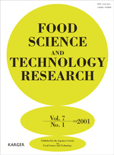
FOOD SCIENCE AND TECHNOLOGY RESEARCH
Connecting Research with Real-World Food ApplicationsFOOD SCIENCE AND TECHNOLOGY RESEARCH, published by the Japanese Society of Food Science & Technology, is a pivotal journal that encompasses a wide spectrum of research in the fields of food science, biotechnology, and engineering. With its ISSN number 1344-6606 and a digital counterpart E-ISSN 1881-3984, this journal aims to disseminate cutting-edge research and innovative technologies that enhance food safety, quality, and sustainability. Recognized for its contributions, it holds a Q3 category ranking in multiple disciplines, including Food Science and Biotechnology, indicating a significant role in advancing academic discourse. Researchers and professionals can benefit from its insights, as the journal covers an array of topics relevant to industrial applications, marketing strategies, and scientific advancements. Although not an open-access journal, it has a wide reach and is committed to providing high-quality, peer-reviewed content essential for scholars and practitioners in the food science community from 1999 to 2024.

Future Foods
Pioneering research for a secure food future.Welcome to Future Foods, a cutting-edge academic journal published by Elsevier, dedicated to advancing the field of food science. As a prestigious Q1 journal in the Food Science category, it ranks impressively as #43 out of 389 in Scopus, placing it in the 89th percentile among its peers. Future Foods aims to explore innovative developments in sustainable food systems, novel food products, and the intersection of technology and food production, thus providing a platform for research that addresses global challenges such as food security and nutrition. With its focus on future-oriented solutions and trends in the food industry, this journal is essential for researchers, professionals, and students who are eager to contribute to the discourse around cutting-edge food science. Situated in the Netherlands, the journal serves the international academic community and fosters collaboration and knowledge sharing in the realm of food innovation.

JOURNAL OF FOOD SCIENCE AND TECHNOLOGY-MYSORE
Exploring Innovations in Food Science Since 1974JOURNAL OF FOOD SCIENCE AND TECHNOLOGY-MYSORE, published by SPRINGER INDIA, is a distinguished peer-reviewed journal that has been contributing to the ever-evolving field of food science since its inception in 1974. With an ISSN of 0022-1155 and E-ISSN 0975-8402, this journal holds a commendable position in the Q2 category for Food Science, as per the 2023 metrics, and ranks #58 out of 389 in Scopus's Agricultural and Biological Sciences sector, achieving an impressive 85th percentile. The journal publishes high-quality research articles, reviews, and case studies that cover a wide array of topics, from food preservation to innovative technologies in food processing. Although it is not an open-access journal, it endeavors to disseminate essential knowledge and research strategies that advance food science and benefit both industry professionals and academia. The geographical reach of the journal, alongside its rigorous editorial standards, solidifies its stature as a pivotal resource for researchers, professionals, and students dedicated to the enhancement of food science practices and technologies.

Acta Scientiarum Polonorum-Technologia Alimentaria
Showcasing Excellence in Food Technology InnovationsActa Scientiarum Polonorum-Technologia Alimentaria, published by Poznan University of Life Sciences, is a revered journal in the field of food science, showcasing cutting-edge research and innovations in food technology. Established as a leading platform within its domain, this journal is indexed under Scopus and ranks in the 2023 Q3 quartile for Food Science, demonstrating its commitment to high-quality scholarship. With an ISSN of 1644-0730 and E-ISSN 1898-9594, it serves as a critical resource for researchers, professionals, and students seeking to stay at the forefront of advancements in food safety, quality control, and sustainable practices. The journal has also been recognized for its contributions to the agricultural and biological sciences, positioning itself at rank #205 out of 389 in this competitive field. While currently not offering open access, the journal's valuable insights and findings, especially as it publishes through 2024, play a crucial role in advancing knowledge and fostering collaboration among experts in the food science sector.

Food Quality and Safety
Exploring innovative solutions for food integrity.Food Quality and Safety is a leading academic journal published by Oxford University Press, dedicated to advancing research in the critical field of food science. With an ISSN of 2399-1399 and an E-ISSN of 2399-1402, the journal has gained prestigious recognition, securing a Q1 ranking in the Food Science category as per Scopus rankings, and being positioned at #69 out of 389 in its field, reflecting its influence and reputation within the discipline. Since its transition to Open Access in 2017, the journal has broadened its reach, ensuring that cutting-edge research related to food quality, safety measures, and consumer protection is accessible to researchers, professionals, and students alike. With a commitment to publishing high-quality articles and reviews, the journal addresses contemporary challenges in the food industry and promotes a better understanding of food safety protocols. Based in Oxford, United Kingdom, Food Quality and Safety plays a pivotal role in shaping future research and practices in food science, making it an essential platform for scholars who aim to impact the industry through innovative findings and applied research.
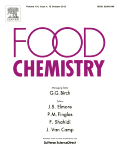
Food Chemistry
Pioneering Research in the Heart of Food ScienceFood Chemistry, published by Elsevier Science Ltd, is a leading international journal dedicated to the publication of high-quality research in the field of food chemistry. Established in 1976, this journal has made a significant impact in its realm, with an impressive 2023 impact factor and ranked Q1 in Analytical Chemistry, Food Science, and miscellaneous Medicine categories. It currently holds a remarkable Scopus ranking of #3 in Analytical Chemistry and #11 in Food Science, signifying its relevance and prestige among the top scholarly publications. With a wide scope that includes the chemistry of food composition, flavor, and safety, Food Chemistry serves as an essential resource for researchers, professionals, and students alike, offering insights and advancements in food analysis and technology. Access options may vary, and the journal is committed to disseminating innovative findings to foster knowledge and application in the dynamic field of food science.
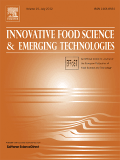
Innovative Food Science & Emerging Technologies
Pioneering Research for Tomorrow's Food SolutionsWelcome to Innovative Food Science & Emerging Technologies, a premier journal published by ELSEVIER SCI LTD that serves as a vital platform for researchers and professionals dedicated to the rapidly evolving field of food science. With an impressive Impact Factor and a position in the Q1 category across notable disciplines including Chemistry, Food Science, and Industrial and Manufacturing Engineering, this journal ranks among the top tier within its fields, evidenced by its Scopus ranking of 20th out of 389 in Food Science, placing it in the 94th percentile. Our readers can expect to encounter cutting-edge research and innovative applications from 2000 through 2024, exploring critical themes that contribute to advancements in food technology, manufacturing processes, and sustainability practices. Although currently not an Open Access publication, we maintain a commitment to disseminating high-quality scholarship that enhances knowledge and encourages collaboration among a diverse audience. Join us in driving forward the forefront of food science research in the Netherlands and beyond.
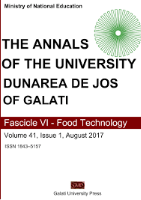
Annals of the University Dunarea de Jos of Galati, Fascicle VI-Food Technology
Cultivating Excellence in Food ScienceAnnals of the University Dunarea de Jos of Galati, Fascicle VI-Food Technology is a distinguished academic journal published by GALATI UNIV PRESS, dedicated to advancing knowledge in the field of food technology. With an open access format since 2007, this journal enhances accessibility to research findings and facilitates the dissemination of innovative ideas among researchers, professionals, and students worldwide. The journal holds a noteworthy position in its category, boasting a 2023 Q3 ranking in both Food Science and Industrial and Manufacturing Engineering, indicating its relevance and contribution to these critical fields. As it converges years of publication from 2012 to 2023, it encapsulates an evolving body of knowledge that reflects the latest advancements and research trends. Although it may not yet have a defined HIndex, its presence in Scopus with ranks of #253 in Industrial and Manufacturing Engineering and #278 in Food Science underscores its emerging impact. This journal is particularly significant for those engaged in research related to food technology and engineering, facilitating dialogue and collaboration within the community while addressing pressing challenges and innovations in food processing and safety. With its commitment to quality research, Annals of the University Dunarea de Jos of Galati serves as an essential resource for fostering knowledge and promoting scientific discussion.

CZECH JOURNAL OF FOOD SCIENCES
Advancing Food Science Knowledge Across BordersCzech Journal of Food Sciences is a premier publication in the field of food science, disseminating vital research since its inception in 1999 and transitioning to Open Access in 2007. Published by the Czech Academy Agricultural Sciences, this journal facilitates the exchange of knowledge among researchers, professionals, and students dedicated to advancing the understanding of food systems, safety, and technology. With an ISSN of 1212-1800 and an E-ISSN of 1805-9317, it holds a respectable position with a Q3 ranking in the Food Science category for 2023, illustrating its commitment to high-quality research despite its Scopus rank of 209 out of 389, situated in the 46th percentile. Located in the heart of the Czech Republic, at TESNOV 17, PRAGUE 117 05, this journal serves as an essential resource for those involved in agricultural and biological sciences, paving the way for innovative discoveries and applications in food science.

JOURNAL OF THE JAPANESE SOCIETY FOR FOOD SCIENCE AND TECHNOLOGY-NIPPON SHOKUHIN KAGAKU KOGAKU KAISHI
Transforming Ideas into Culinary InnovationsWelcome to the JOURNAL OF THE JAPANESE SOCIETY FOR FOOD SCIENCE AND TECHNOLOGY-NIPPON SHOKUHIN KAGAKU KOGAKU KAISHI, a pivotal platform for the advancement of food science and technology. Published by the Japan Society for Food Science and Technology, this esteemed journal has been contributing to the field since 1995 and continues to publish innovative research and reviews that foster knowledge and collaboration among researchers, professionals, and students interested in food science. Although it currently holds a Q4 ranking within the Food Science category, the journal's commitment to disseminating valuable insights showcases its potential as a resource for emerging trends and applications in food technology. While it does not offer open access options, it maintains a rigorous peer-review process to ensure the quality of its content. As this journal progresses into its convergence years through 2024, it remains an essential resource for those passionate about exploring the intersections of food science and technology in Japan and beyond.